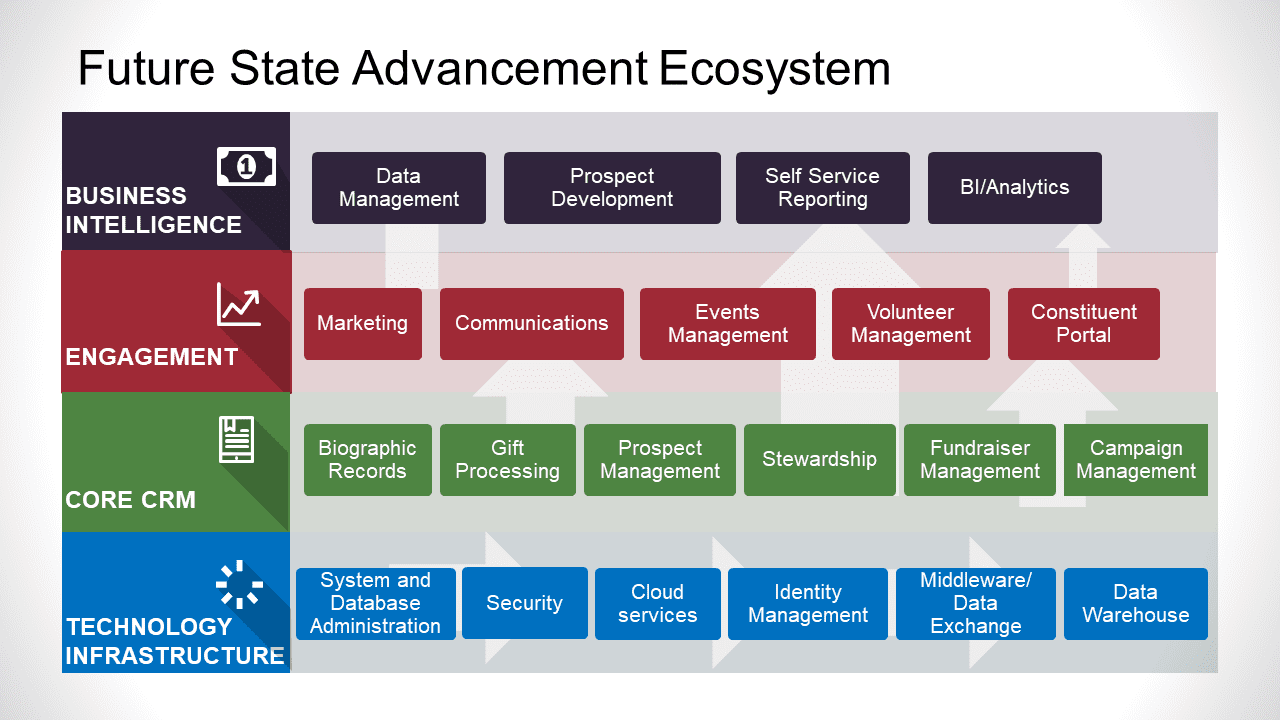Wow, the landscape of Advancement systems sure has changed. I don’t know how it happened, but I look around and it seems that suddenly I’ve been working in higher education for 31 years. If you count the time I worked as a student in 6 or 7 jobs, I’ve been in higher education for 36 years. Most of that time – 28 years – has been in advancement, and 20 of those years I’ve been involved closely with advancement systems.
We are in a most remarkable time and space for advancement systems – unlike I’ve ever seen. Most institutions are needing to replace their aging systems, but there are not a lot of options. The landscape is further complicated by a workforce which expects everything to be Amazon-like in its delivery – easy to use, seamless, requires no training – and has little patience for anything else. At the same time, we are asking our advancement systems to be more than just a “system of record.” Our systems need to be able to personalize outgoing communications, provide meaningful data for decision making, and yet also be as efficient as possible.
The age-old question after we implemented Advance at Stanford University years ago is whether the database system was for “power users,” or was it supposed to be all things for all users, even the less technically inclined or casual user. At the time, the database was trying to be all things but with only limited success. Now, the landscape has changed.
My view is that we now have the answer to that age-old question: the core database, is just that – a core database which is the system of record for biographic information, gift and pledge transactions, a repository for contact reports, correspondence, and other documentation. What’s exciting about today’s landscape is that you can overlay the core database with a whole host of tools to help with personalization, communication, segmentation, relationship management, reporting, data analytics – powerful software tools to conduct business in the way in which is important to you.
One way we think of advancement system needs is in the form of Maslow’s Hierarchy of Needs:

We need basic functions like servers and internet, authentication and security before we can think of anything else. Core data needs such as biographic data and what is done with that biographic data, like mailings, signify low engagement. Belonging needs, or beginning engagement, are gifts & pledges, and research. Esteem needs, or substantive engagement are stewardship and prospect management. Self-actualization is realized with self-renewing engagement.
Tools overlaying a core database creates an ecosystem: if you have the right integration tools, you can swap out tools as new ones are developed, or as business needs change. The following diagram has the nickname the “layer cake” diagram at TSI:

With this type of ecosystem, we can do more to take advantage of technology and be nimbler to react to constituent and business needs. There are vendors who are doing fascinating, good work in this space, and if you are open to this type of advancement systems ecosystem, you can more readily take advantage of this exciting time in our profession. The difficulty arises in deciding which tools to employ; TSI can help you articulate the problem or issue you need to address, and then figure out what solution will work. Contact us!
